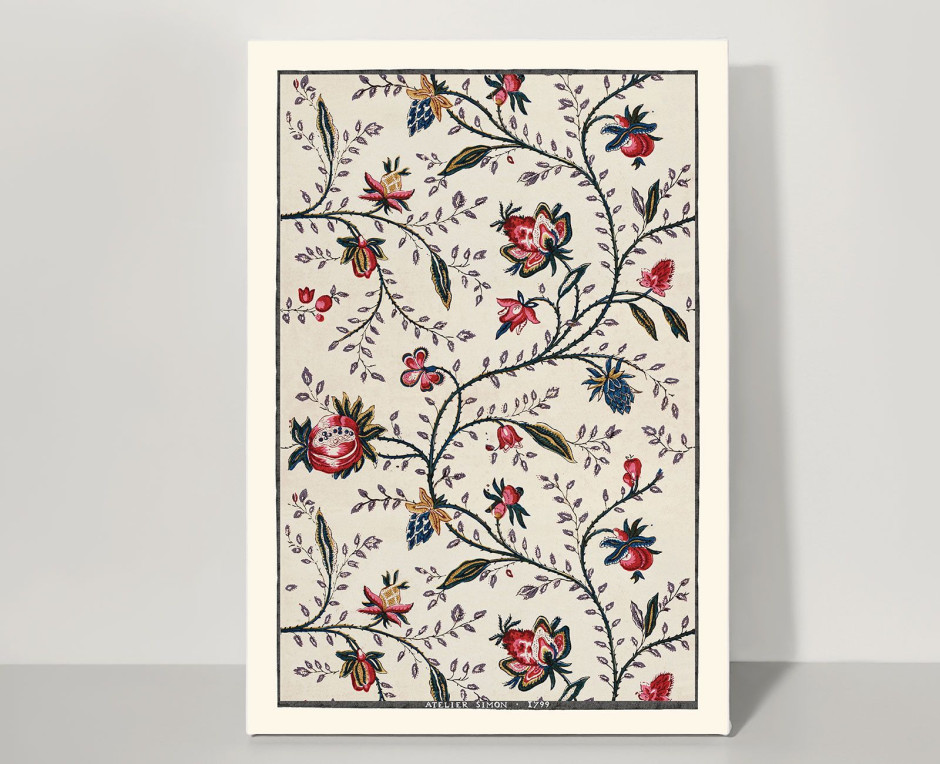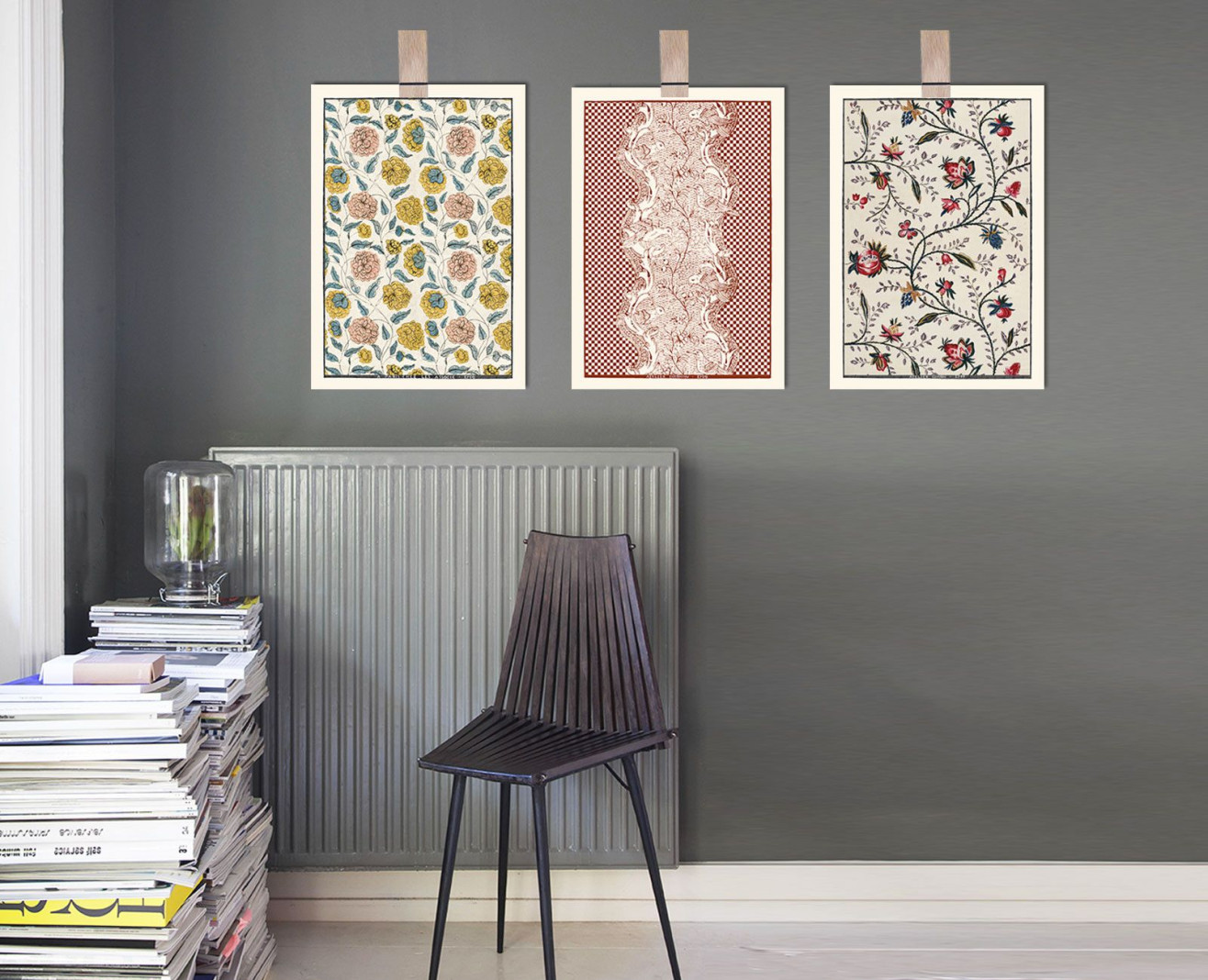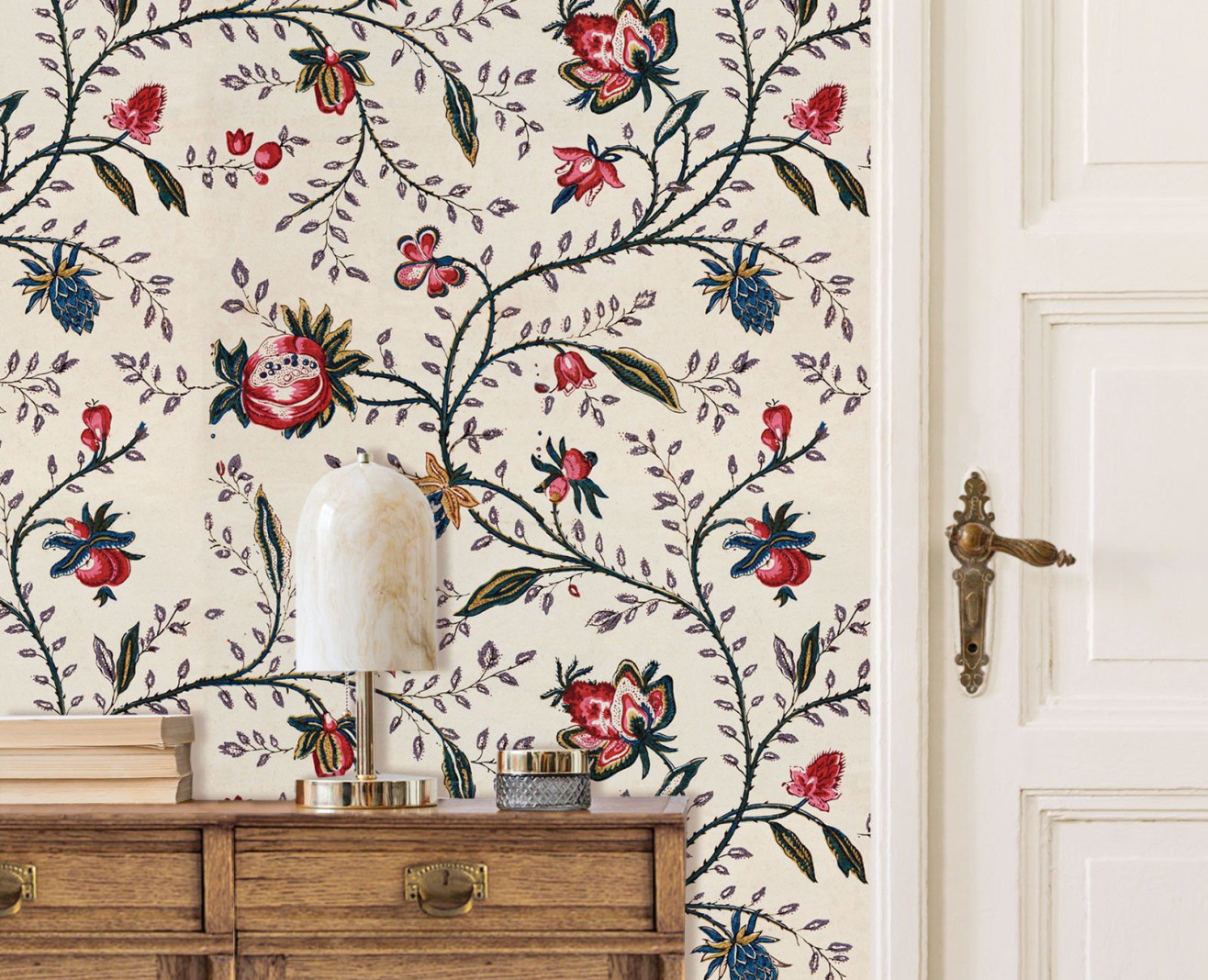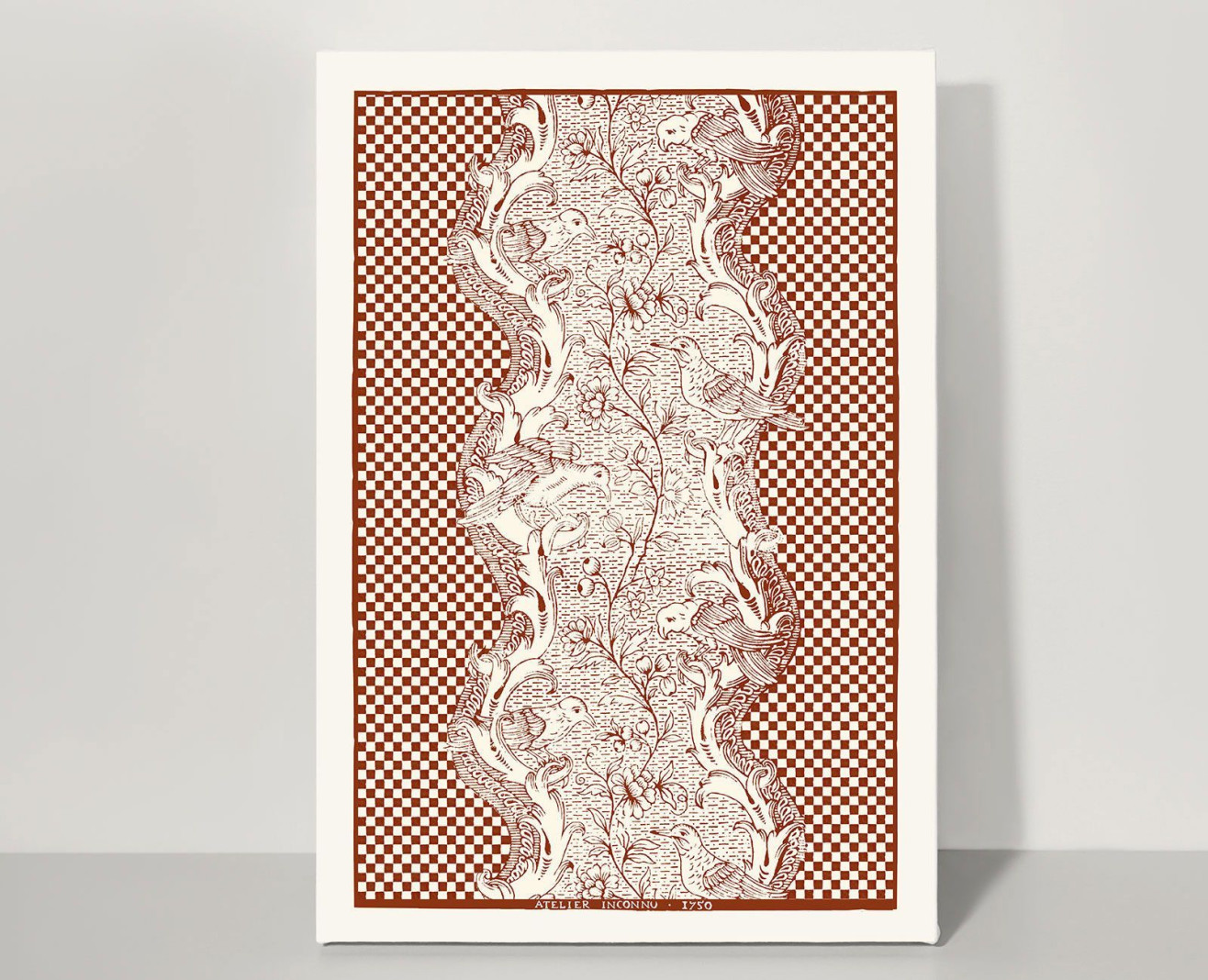No products
- LA PREMIUM finish ideal for walls, kitchen and bathroom
- L’EXTRA finish ideal for woodwork
You still have to place an order for additional boards
(boards are only sold by 3)
Vellum paper board Indians A3 . 1799
Manufacturer Simon
12,00 €
DESCRIPTION
Made by the Simon Manufacture in 1799, this design represents sinuous branches, fruits and fancy flowers in a style reminiscent of Indian cotton, these very fashionable fabrics of the 18th century. This design is not strictly domino paper but rather « style domino » because its original size was larger than the traditional sheet of 36X45cm. The original design was printed by means of engraved wood-blocks in 6 colors on joined together paper rolls.
To give life and modernity to this beautiful wallpaper from the end of the 18th century, our workshop carried out a long digital restoration.
Patterns are printed on light ivory 300g vellum paper (stiff), format A3. The boards are sold in sets of 3, they cannot be purchased individually. They are featured in a majestic cardboard envelope with patterns.
Collection of la Bibliothèque Nationale de France
Established rue Saint Martin in Paris in 1788 , the Manufacture Simon seems to be active until the middle of the 19th century. It produced rich papers enhanced with gold and bright colors. His velvety wallpapers most often imitate fabrics and architectural elements. Building on its success in France, the manufacture also developed its distribution in Europe. During the French Revolution, she was one of those, like Jacquemart & Bénard, who knew how to take advantage of the change of regime by offering "republican style" collections (cf the Anecdote).
1799
On August 13, 1792, Louis XVI, Marie-Antoinette, their children and Madame Elisabeth, the king's sister, were imprisoned in the Temple prison. The rooms of the royal family were then decorated with wallpapers made by the Manufacture Simon, the one that produced "Indiennes" design. Just before the destruction of the Temple, some pieces of paper left on the walls were preserved as precious relics by the Countess Héracle de Polignac.
This design represents in particular pomegranates, fruit from a shrub of Asian origin, very frequently drawn on Indians and representative of a real craze of the 18th century for the exotic style. It was in the middle of the 17th century that the so-called "Indian" printed cotton fabrics from the Orient enjoyed immense success in Europe and France. Wallpaper manufacturers followed this trend by imitating the iconography of textiles: birds, exotic fruits and flowers, garlands and trees of life spread over the paper decorations.













